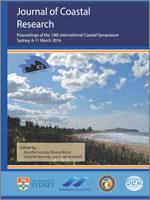Takamura, M.; Udo, K.; Sato, M., and Takahashi, K., 2016. Analysis of Coastal Erosion due to the 2011 Great East Japan Tsunami and Its Recovery Using Ground Penetrating Radar Data. In: Vila-Concejo, A.; Bruce, E.; Kennedy, D.M., and McCarroll, R.J. (eds.), Proceedings of the 14th International Coastal Symposium (Sydney, Australia). Journal of Coastal Research, Special Issue, No. 75, pp. 477–481. Coconut Creek (Florida), ISSN 0749-0208.
The 2011 Great East Japan Tsunami caused severe beach erosion along the Pacific coast. Eroded beaches began to recover rapidly after the tsunami, but the rate of beach recovery declined recently. We conducted a ground-penetrating radar (GPR) and borehole survey at Yamamoto Beach, which was eroded by the 2011 tsunami, to understand the tsunami recovery process using a new method that combines GPR, satellite images or aerial photographs, and tidal data. We compared reflective surfaces with geological layers observed using the GPR and borehole survey, respectively, to investigate the relationship between the recovery process data obtained from the proposed method and the actual underground structure. The result of the GPR survey at Yamamoto Beach suggests that the estimated profiles from April 4, 2011 to November 2012 maintain a gradient ranging 0.05–0.13 and that recovery speed decelerated with time after the tsunami. The sedimentary structure after November 2012 differs from the previous structure as a result of levee construction. Boundaries formed by a layer between the sand and the sand with gravel layers were observed and found to be nearly consistent with the GPR reflection planes. GPR results identified differences in the water content ratio between the layers owing to changes in grain size. Moreover, GPR reflections appear where layer boundaries are not observed. This also suggests that GPR is capable of recording differences in soil properties that cannot be identified visually.





